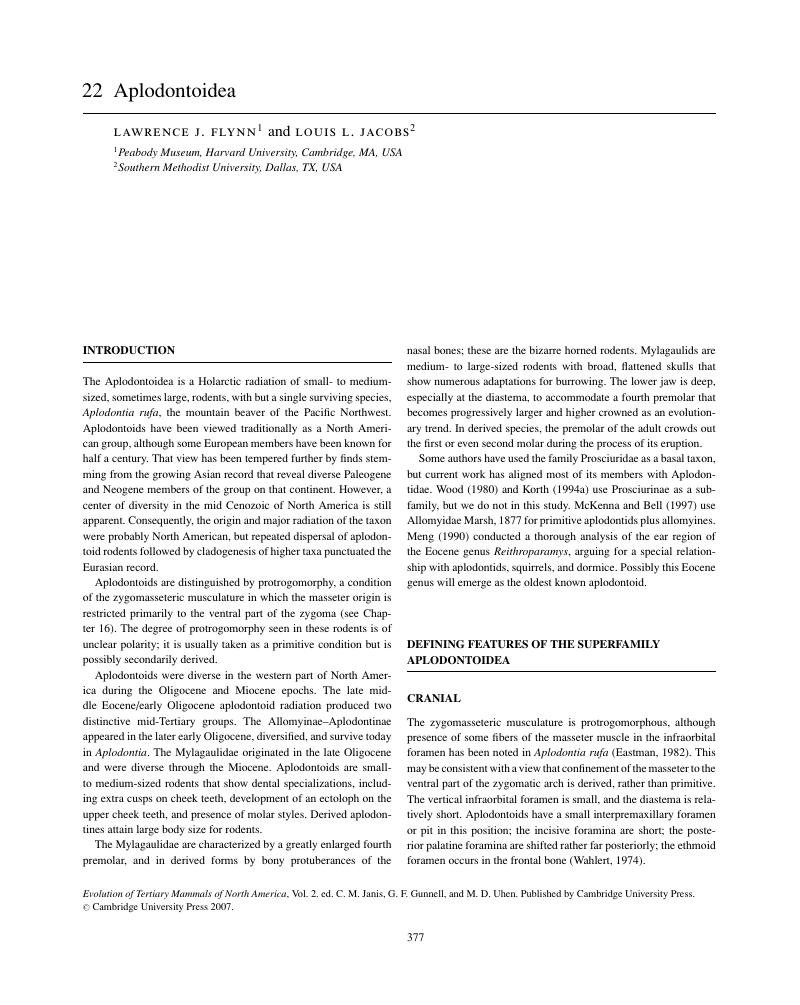Book contents
- Frontmatter
- Contents
- Contributors
- 0 Introduction
- Part I Non-eutherian mammals
- Part II Insectivorous mammals
- Part III “Edentata”
- Part IV Archonta
- Part V Glires
- 16 Glires summary
- 17 Lagomorpha
- 18 Ischyromyidae
- 19 Sciuravidae
- 20 Cylindrodontidae
- 21 Sciuridae
- 22 Aplodontoidea
- 23 Castoroidea
- 24 Dipodidae
- 25 Eomyidae
- 26 Geomorpha
- 27 Cricetidae
- 28 Arvicolidae
- 29 Hystricognathi and Rodentia incertae sedis
- Part VI Marine mammals
- Appendices
- Index
- References
22 - Aplodontoidea
from Part V - Glires
Published online by Cambridge University Press: 07 September 2010
- Frontmatter
- Contents
- Contributors
- 0 Introduction
- Part I Non-eutherian mammals
- Part II Insectivorous mammals
- Part III “Edentata”
- Part IV Archonta
- Part V Glires
- 16 Glires summary
- 17 Lagomorpha
- 18 Ischyromyidae
- 19 Sciuravidae
- 20 Cylindrodontidae
- 21 Sciuridae
- 22 Aplodontoidea
- 23 Castoroidea
- 24 Dipodidae
- 25 Eomyidae
- 26 Geomorpha
- 27 Cricetidae
- 28 Arvicolidae
- 29 Hystricognathi and Rodentia incertae sedis
- Part VI Marine mammals
- Appendices
- Index
- References
Summary

- Type
- Chapter
- Information
- Evolution of Tertiary Mammals of North America , pp. 377 - 390Publisher: Cambridge University PressPrint publication year: 2008
References
- 10
- Cited by



